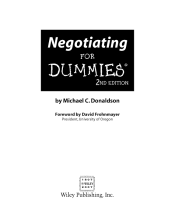Culture - Cultural values
8 important questions on Culture - Cultural values
What are the core western values?
Individualism, freedom, merit competitiveness and accomplishment, materialism, change and scientific an industrial progress, belief in the equality of opportunity.
What are the core eastern values?
Collective identity, inner harmony, respect for tradition, respect for hierarchy, particularism, consensus
Geert Hofstede created five universal dimensions on which societies differ. Name them
- Individualism versus collectivism
- Power distance
- Uncertainty avoidance
- Masculinity versus feminity
- High context versus low context
- Higher grades + faster learning
- Never study anything twice
- 100% sure, 100% understanding
Explain the dimension of Hofstede's framework: individualism versus collectivism and its marketing implication.
Individualistic cultures value self-interest over group interest and they value unlimited freedom and survival of the fittest. Collectivistic cultures exhibit close ties between individuals, allow only for a limited amount of personal freedom and seek protection of the group. 'Me' versus 'We' Cultures.
Individualistic appeals (stand out from the others) commonly found in Western advertising, would be unsuitable for collectivistic societies.
Explain the dimension of Hofstede's framework: power distance and its marketing implication
Power distance: extent to which the less powerful members of the society accept the authority of those with greater power. In societies with large power distance, superios are expected to maintain a distance from subordinates.
In cultures of small power distance, decision-making is more participative. In countries with large power distance you have to appeal to the head of the household, while in small power distance countries you would have to appeal to the individual member of the family.
Explain the dimension of Hofstede's framework: uncertainty avoidance and its marketing implication
Uncertainty avoidance: extent to which people in society feel threatened by ambiguous situations and want to avoid them. Uncertainty avoidance leads people to not take risks, being less entrepreneurial and innovative.
Consumers in societies with high uncertainty avoidance, would be less likely to buy products without first being certain about their beneftis, and less likely to try unfamiliar service provides. However, they are naturally more eager to buy insurance.
Explain the dimension of Hofstede's framework: masculinity versus feminity and its marketing implication
Masculine cultures: value money, success, power and mastery of the environment.
Feminine cultures: value harmony, peace of mind, caring for others and quality of life
In feminine cultures, consumers tend to reject environmentally unfriendly products and products whose benefits are primarily materialistic in nature. In masculine cultures seek products that promiss material success and adventure rather than tranquility.
Explain the dimension of Hofstede's framework: high context versus low context and its marketing implication
High context: to understand something you need to know the context, people use symbals and nonverbal cues in communication. Low context: you don't need to know the context, the thing is self-explantory, people are explicit in their communication.
In high context cultures there is a greater use of soft-selling, advertisements emphasize harmony and oneness with nature and use indirect symbolic messages. Low context cultures use simplicity, directness and explicitness in communications.
The question on the page originate from the summary of the following study material:
- A unique study and practice tool
- Never study anything twice again
- Get the grades you hope for
- 100% sure, 100% understanding































